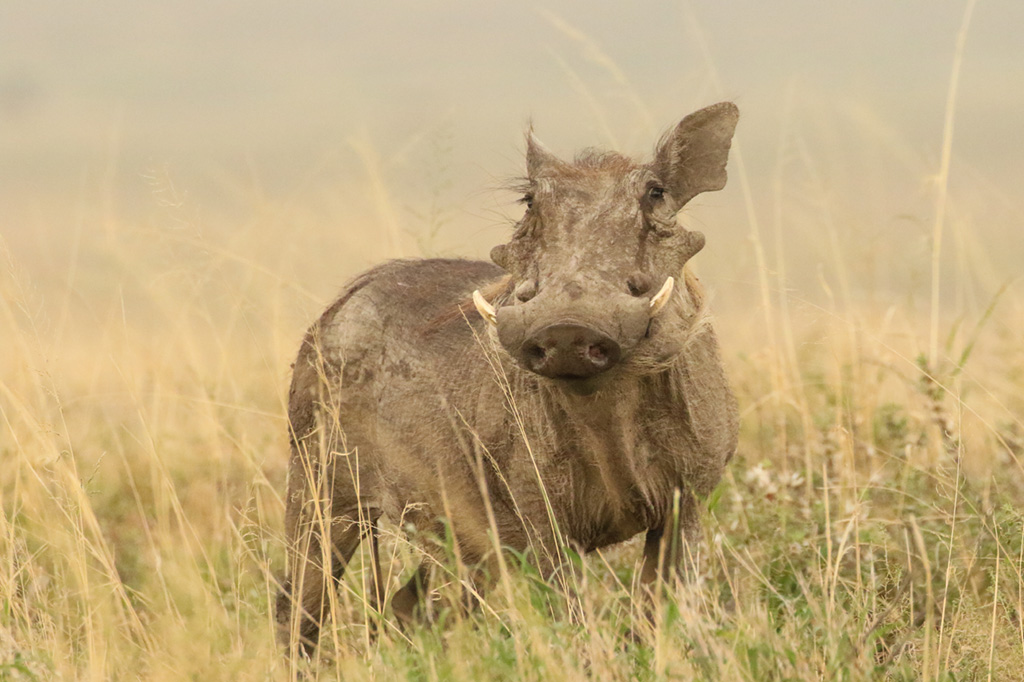This past July, the City of Trees gained some new residents, though they were a little more exotic than the usual influx of new Boiseans. They included a raft of African animals: wild dogs, baboons, vervet monkeys, crocodiles, spotted-necked otters, and nyala antelope. The occasion was the opening of Zoo Boise’s new Gorongosa National Park exhibit, a 2.5-acre section of the zoo paying tribute (and conservation funds) to the spectacular park in Mozambique, which is undergoing a massive restoration effort.
Zoo Boise and Gorongosa National Park in Mozambique have had a longstanding partnership, according to Zoo Boise’s assistant director Liz Littman. “We showcase the animals in the Park and tell the story of the restoration work that is being done with the community and the animals that live there,” Littman said in a recent interview.
The new exhibit is a $9 million undertaking, $6 million of which went to construction costs, according to
Littman. In addition, the Friends of Zoo Boise has pledged to raise 10 percent of construction costs, or $600,000, to provide funds for conservation programs. This is a longstanding tradition of Zoo Boise: the zoo routinely donates a portion of admission ticket sales to conservation efforts. As Littman put it: “We are redesigning what a zoo can be worldwide.”
The Gorongosa National Park story is a long and complicated one (see sunvalleymag.com/articles/paradise-lost-and-found/ for an in-depth article) that starts in the 1960s with a park renowned as one of the great African wildlife parks. Shortly after Mozambique gained independence, the country became mired in a civil war from 1977 to 1992. During those 16 years of war, over a million people were killed; a million fled in exile. Tens of thousands of animals were killed for food, caught in crossfire, or just killed in the fever of war. The park, the people living there, and the infrastructure—schools, health clinics, farms—were all devastated.
Enter Idaho Falls resident Greg Carr who first learned of the human and ecological tragedy in 2002. Armed with passion, entrepreneurial skills, and a fortune earned in the digital communications industry, Carr saw that the park’s restoration was intricately tied to both the buy-in and the well-being, of the communities living in the park. Not only did Carr pledge to spend $40 million (he has spent more) to restore the park, but he also committed to building schools, health clinics, reforestation projects, and sustainable farming programs.
Seventeen years in, the undertaking is bearing fruit. The animals are coming back, the restoration and ensuing tourism have created jobs, school children are flourishing, and health clinics are serving a population that had never really had any significant health care before.
Matthew Jordan, associate director of the Agricultural Livelihoods Program at Gorongosa National Park, told me that two of his group’s overarching objectives are to create sustainable farming mechanisms and to conserve the rainforest on Mount Gorongosa, the critical component of a huge rain catchment system that feeds river systems and Lake Gorongosa, an expanse teeming with wildlife. Unfortunately, historical farming there entailed slash and burn techniques, which resulted in much of the mountain becoming deforested. Traditionally, maize was planted in the cleared areas.
“Usually, the nutrients of the rainforest are kept in the rainforest,” Jordan said. “The humus material [on the surface] is where the nutrients are. When you take away the trees, you take away the ability of the rainforest to replace the nutrients.” With the slash and burn technique, Jordan said, “by the third or fourth year, the farmers get marginal yields.”
To combat the problem, Jordan and his team have worked with local farmers to plant over 250,000 trees on Mount Gorongosa. Further, they have planted shade-grown coffee trees that thrive under the canopy of the rainforest. The coffee beans are harvested on site by the farmers, then wet-processed in a factory nearby. The workers in the factory, Jordan pointed out, are mostly women.
Once the beans are wet-processed, the farmers are left with “green bean coffee,” which is one of the most valuable commodities and commodity markets in the world.
The Gorongosa coffee is then shipped to Idaho Falls, Idaho, where it is roasted by the Chapolera Roasting Company and prepared for sale. One such place of sale is, of course, the café at Zoo Boise. In addition, the zoo has modified a safari truck from which to sell the Gorongosa product. Jordan said that he plans to take Gorongosa coffee to other zoos, as well as to sell it online. Naturally, the revenue flows back to the farmers on Mt. Gorongosa.
Jordan noted that 80 percent of Mozambique’s 23 million people are subsistence farmers. While the coffee program currently involves only about 300 to 500 farmers, Jordan and his team are gaining the trust of the community, and they expect the program to grow significantly.
The Gorongosa coffee project is the latest link tying together Idaho, Zoo Boise, and Gorongosa National Park. It is also an innovative model of a conservation effort coupled with a human development project. It is yet another example of what Carr told me a few years ago when the coffee program was just getting under way: “We have to be really involved in their lives. The park has got to be helping their lives in a lot of different ways, so that they say, ‘you know what, we’re better off with a park than without a park.'”

